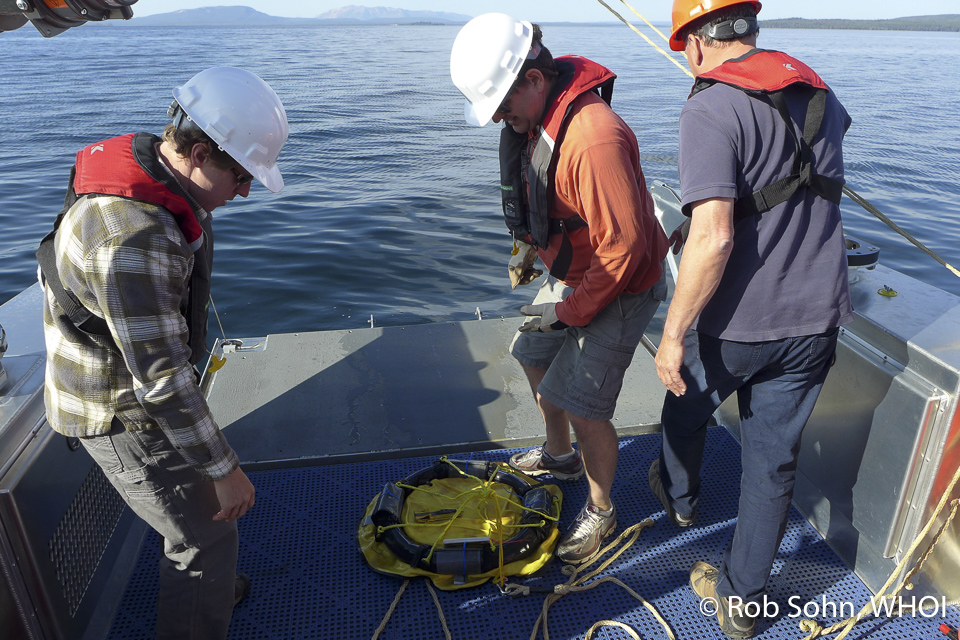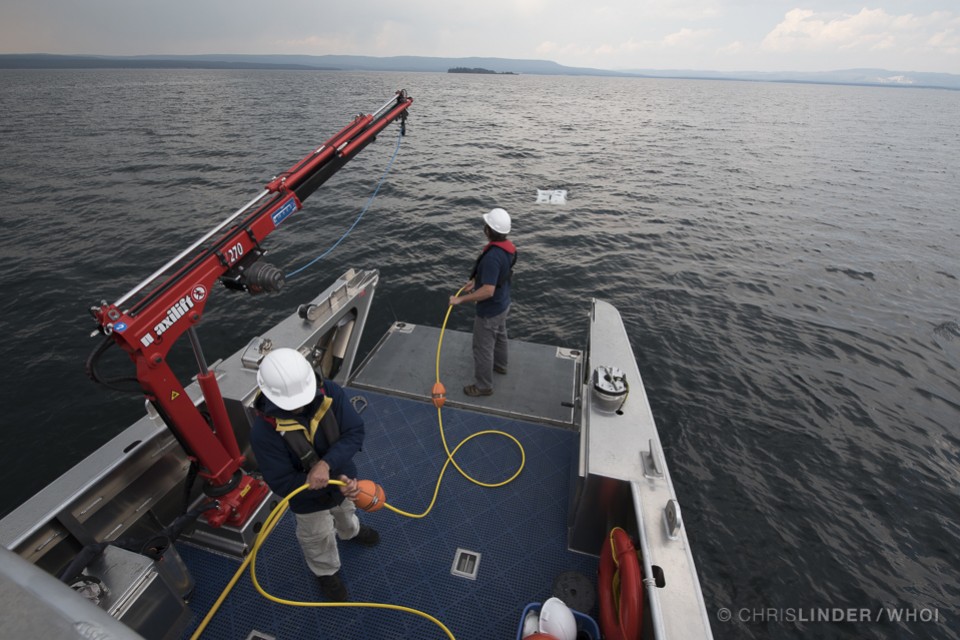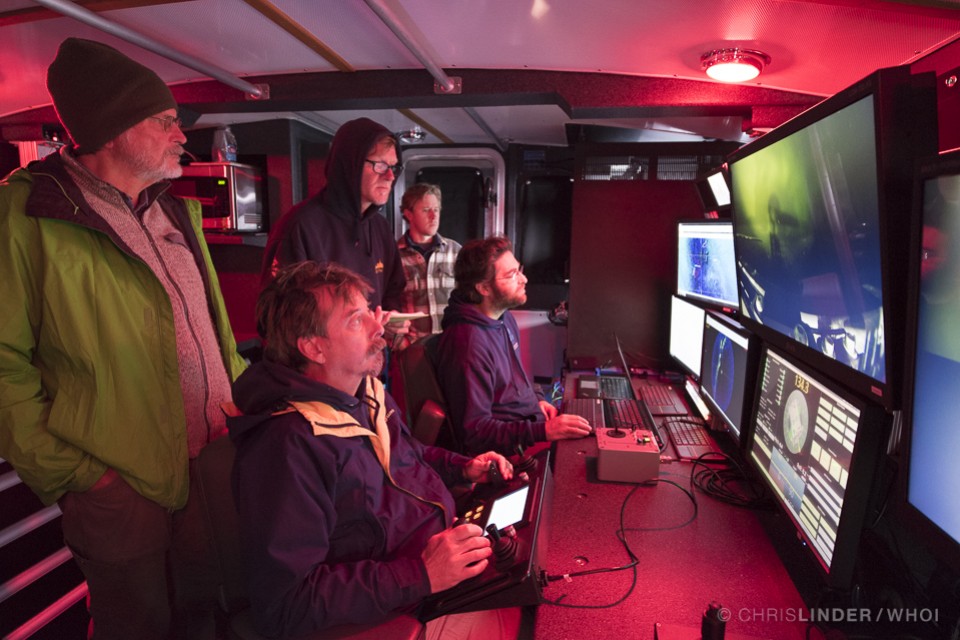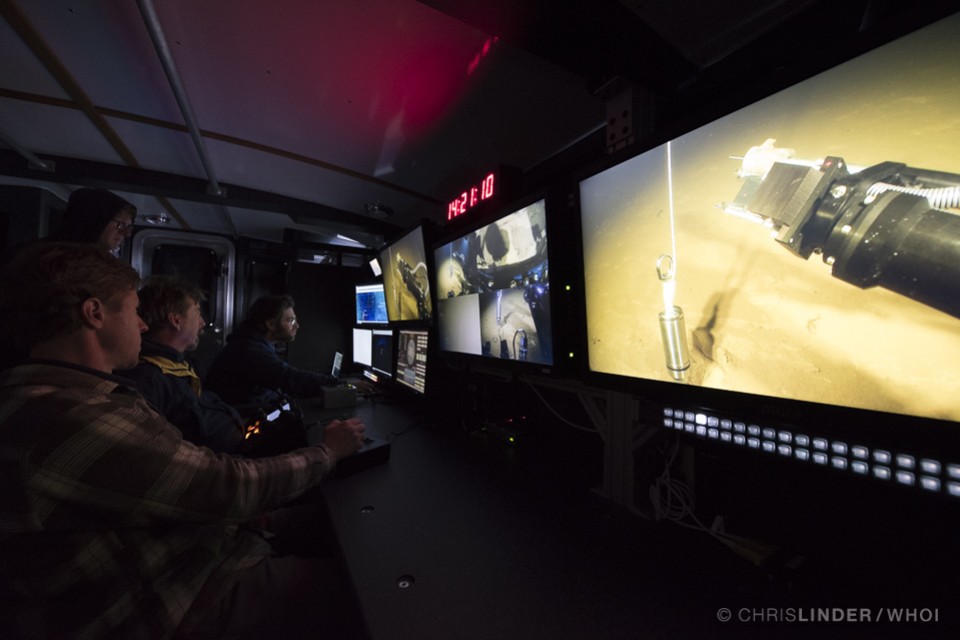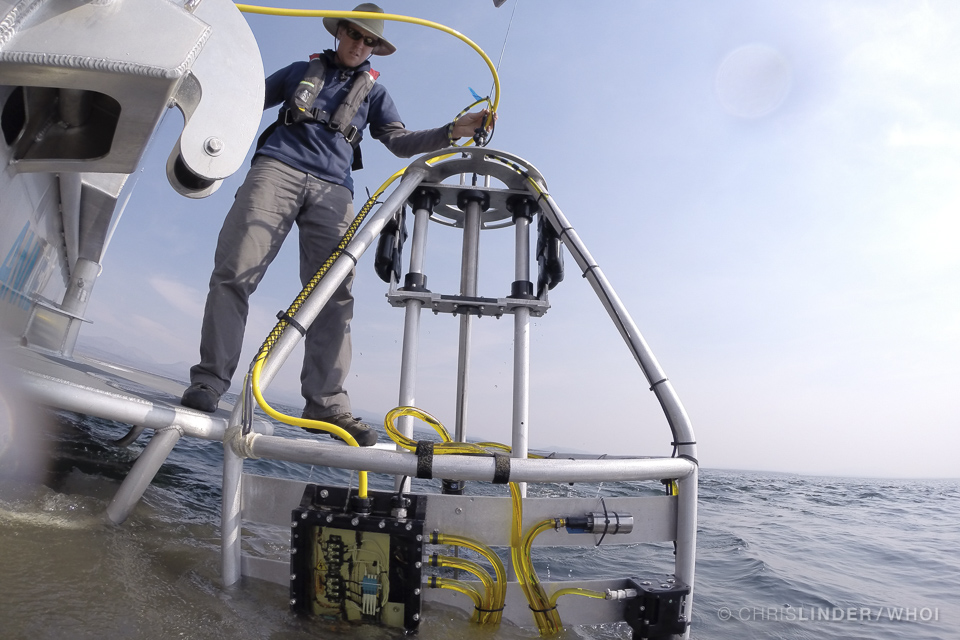Yellowstone National Park is world renowned for its geothermal activity. Hot springs, mud pots, and geysers bubble and froth, sending plumes of steam up into the air on cool mornings. Scientists from the HD-YLAKE project are interested in measuring the flow of heat from the lake floor, and how it varies with time at different locations. Heat flow is measured by determining how fast the temperature increases with depth below the lake floor, and specialized tools are required when you are working in a lake that is more than 400 ft deep. The heat we are measuring comes directly from the magma chamber(s) that underly the Yellowstone caldera, and at our focus site we measured values greater than 100 W/m^2, which is more than one thousand times the average value for sites in North America.
Photos by Chris Linder and Rob Sohn, WHOI. Work was completed under an authorized Yellowstone Research Permit.
Heat flow is happening all around us. In Yellowstone, it's easily visible on a cool morning as fog forms on the warmer (relative to the air) lake surface and geothermal steam from Sulphur Hills condenses as it rises into the air. Work was completed under an authorized Yellowstone Research Permit.
Rob Harris from Oregon State University (middle of this photo, red shirt) is the lead scientist for the heat flow measurements. In August, Dr. Harris worked aboard the Annie to deploy a variety of instruments to measure heat flow on the bottom of Yellowstone Lake. Here he prepares a thermal blanket for deployment. Work was completed under an authorized Yellowstone Research Permit.
In August, the team used 'the chandelier', an instrument that is lowered off the Annie and has a long temperature probe that measures the heat flow through the lake sediments. Work was completed under an authorized Yellowstone Research Permit.
The team also used the remotely operated vehicle Yogi to carefully place heat sensors on the lake bed. The team will retrieve them, and their precious data, next summer. Work was completed under an authorized Yellowstone Research Permit.
The team huddles around monitors in Annie's control room, watching a live video feed of Yogi's robotic arm precisely placing a heat flow probe into the lake bed. Yogi deployed 4 probes that will measure heat flow continuously for the next year. Work was completed under an authorized Yellowstone Research Permit.
A monitor shows a closeup of the probe. The line attached to the probe links it with a float, which makes it easier for the team to find next summer. Work was completed under an authorized Yellowstone Research Permit.
Todd Gregory lowers 'the chandelier' over the side. Once on the bottom, a probe with 6 thermometers at evenly spaced depth intervals is inserted into the sediment. By measuring the temperature change with depth the team can then compute how much heat is flowing into the lake from beneath the surface. Work was completed under an authorized Yellowstone Research Permit.
The team lowers a thermal blanket over the side. The thermal blankets are simpler, but less accurate, instruments to use compared to the probes that must be inserted into the sediment. The instruments sit on the lake floor, and have a thermometer above and below a closed cell foam 'blanket'. The temperature difference across the blanket allows the team to estimate how much heat is flowing into the lake from the top of the sediment layer. Work was completed under an authorized Yellowstone Research Permit.

